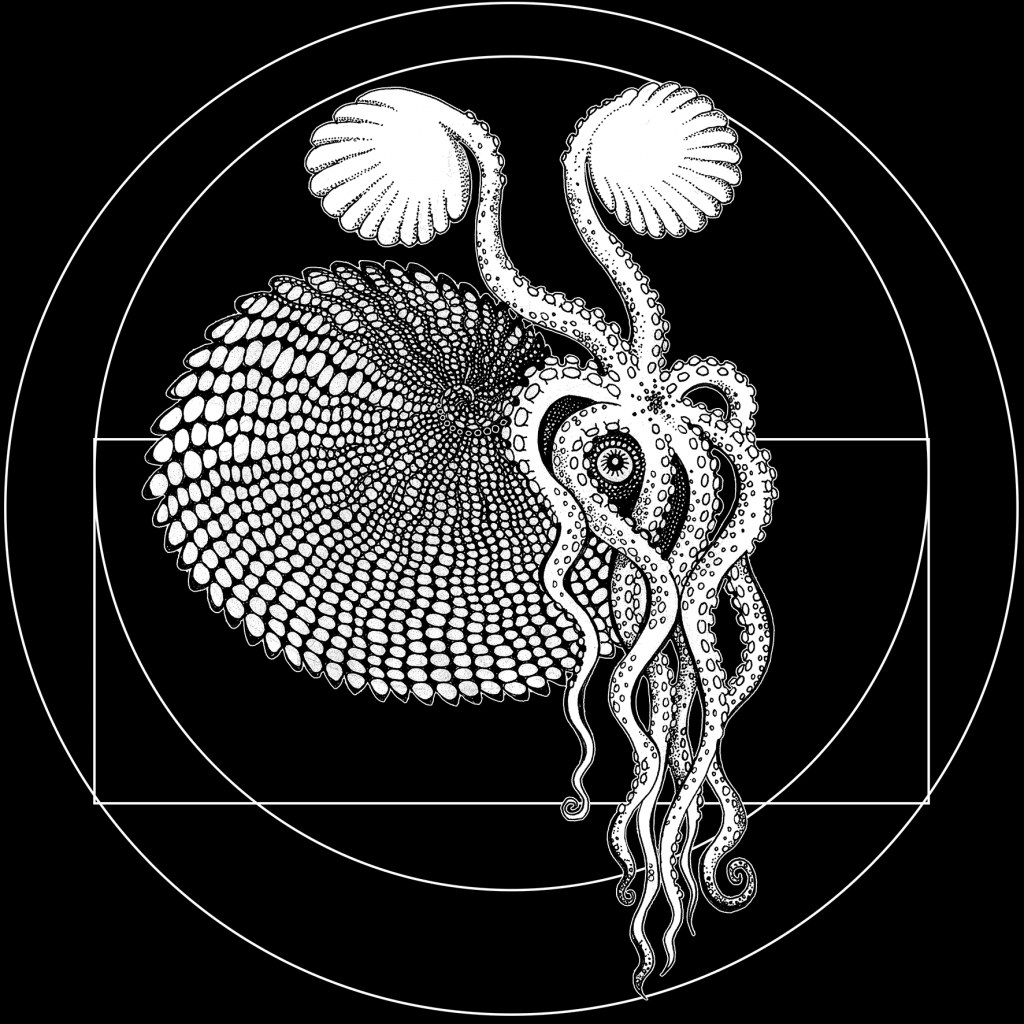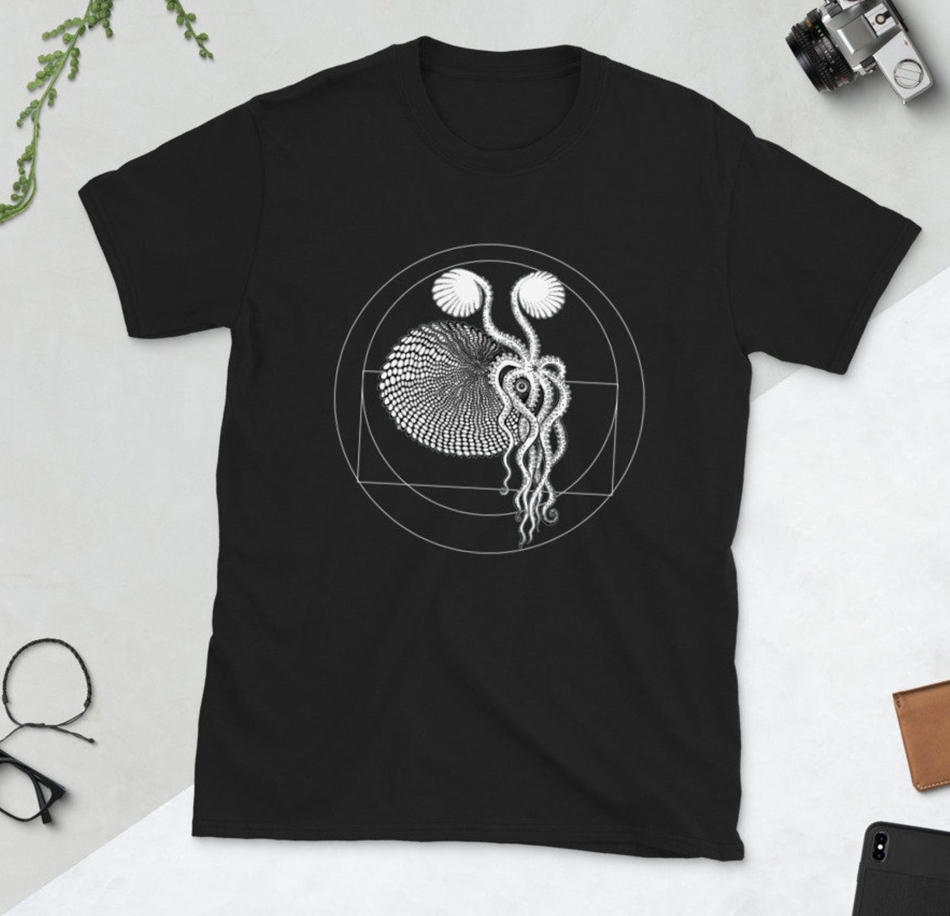Argonauta

Despite their (yet again) misleading common name, paper nautilus, this animal is in fact an octopus, not a nautilus.The superficial similarity of the two groups’ shells is misleading, as the beautiful and much thinner argonaut shell is only built by the females of the species, unchambered and secreted by two specialized tentacles. The purpose of this shell is multifold – like other octopuses argonauts lay eggs and are highly protective of their little ones. Their pelagic lifestyle makes it difficult however to build a stable home – unless it can travel with you. The shells are thus primarily a nest, secondarily a refuge for the mother and thirdly a buoyancy device as air bubbles are trapped in the case at the surface and then carefully added to or removed to reach optimal density.
And while these beautiful structures have been known since, and probably before Aristotles, the males of this species were for a long time curiously absent. It was only in the 19th century that the mysterious sexual life of the argonauts was discovered: what had hitherto been believed to be a parasitic organism often found in the Argonauts shells was analysed and found to instead by the severed arm of a male of the species. While most cephalopods do in fact use a modified arm (the Hectocotylus) to transfer packages of sperm to the female, Argonaut males go a step further and remove their arm which then wriggles into the female’s shell on its own and fertilizes the eggs there (if she permits it). In addition to this, which in itself already is the pinnacle of feminism, the sexual dimorphism in these animals is enormous, with females reaching sizes of 30-40 cms, while males struggle to reach a full-grown size of 2 cms.
For T-shirts and art prints of the Argonaut in my Etsy store click on the images below:
Frontal-print T-shirts (starting from 21.05 USD)
